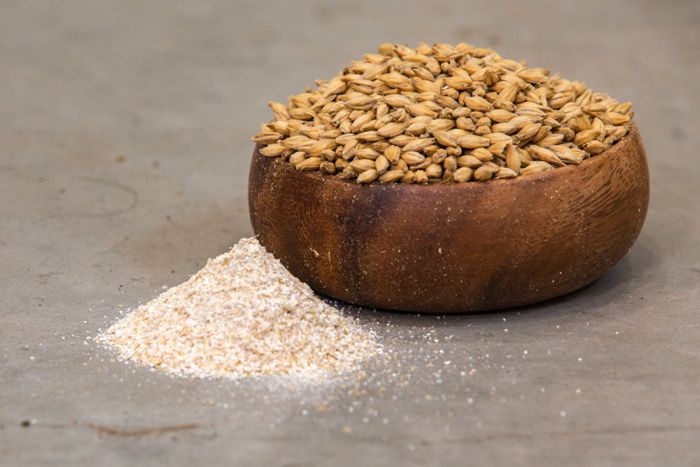Growing craft beer sector thirsty for local malt
Prairies' craft brewers seeking specialty malts elsewhere
| 4 min read

A two-row Bentley base malt. (RedShedMalting.ca)
CNS Canada — Craft breweries are a growing subsector of the Canadian beer industry, but the increased variety of local drink options are not necessarily 100 per cent homegrown, as a lack of domestically produced specialty malts forces brewers to look far afield to meet their needs.
“We get our base malt locally, but we don’t have any maltsters in the province making the specialty malt we need,” Colin Enquist, sales and marketing manager with PEG Beer Co. in Winnipeg, said via email.
The specialty malt being imported from the U.K., Germany, and other countries “comes down to the availability and some suppliers just having a better product,” he said.
Malt is created through a three-step process which sees grain soaked, germinated, then kilned, converting the starches in the grain into sugars.
Variations in that process, from the grain used to how long the end product is kilned or roasted, can impact the flavour of the resulting beer.
“We’ve actually had a couple people come into the pub and ask if they opened a specialty malt shop if we’d be interested in buying more locally grown malt,” said Enquist, adding “we absolutely would buy all local if we could and it was to the quality we need.”
An added irony of the situation is that in some cases the European malt finding its way into Canadian beers could have been created using Canadian barley to begin with, said Lawrence Warwaruk of Farmery Estate Brewery at Neepawa, Man.
The Farmery brewery creates beer using grain grown on its own farm, but that barley is still malted offsite through an agreement with the Malteurop facility in Winnipeg.
“There is definitely a market for specialty malts,” said Warwaruk, adding that while the large malting companies “do a fantastic job of what they do,” specialty malts have a higher value and could find a home both domestically and even abroad.
“You need to create a demand for locally sourced barley, malted locally, and sold locally,” he said. His company has looked into malting its own grain as well.
The Canadian Malt Barley Technical Centre (CMBTC) in Winnipeg runs training programs a few times a year for aspiring maltsters and those already in the industry.
Peter Watts, managing director of the CMBTC, noted the craft malting sector is very small in North America, accounting for less than one per cent of the total malt production.
He estimated that of the 40 to 50 craft maltsters in North America, only about half a dozen were in Canada. However, he said, there was plenty of interest from the craft industry.
“With the growth and expansion in the craft brewing industry in the last ten years, it has created demand for craft maltsters,” said Watts.
From a theoretical perspective, malting grain is rather basic, but in practice “it’s a pretty big investment up front,” said Watts.
Matt Hamill of Red Shed Malting in Red Deer went through the CMBTC course and is now operating a small-scale maltster. The company’s genesis came from a conversation between Hamill’s father, a farmer, and his brother, who was brewing his own beer.
“Why are we getting malt from Germany, when we grow pretty amazing malt-quality barley right here on the farm?” was the question asked, which, after a number of steps along the way, eventually led to a malt house.
“We certainly felt, and still do feel, that there is a need and a place for craft maltsters,” said Hamill.
“We can play around with different barley varieties and production methods,” he said, adding that the smaller scale also allows them to work closely with craft brewers “to make sure we’re giving them exactly what they’re looking for.”
Craft brewing also uses more barley to make the same amount of beer, said Hamill, noting craft beer may need three to seven times more barley compared to mass-produced beers, as brewers are not supplementing with corn, sugar or other adjuncts.
“The big maltsters make a great base malt, but we feel there is an opportunity to do some unique things and put our own twist on it,” said Hamill, adding that “seeing your product make it into beer that you can get at the local liquor store is a pretty amazing thing.”
— Phil Franz-Warkentin writes for Commodity News Service Canada, a Winnipeg company specializing in grain and commodity market reporting. Follow Phil at @PhilFW on Twitter.


